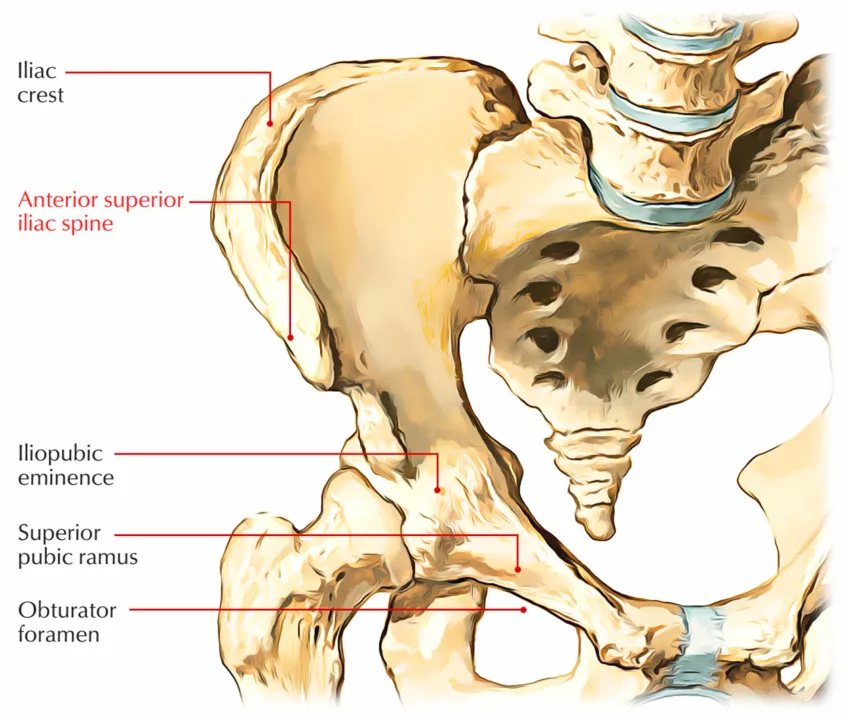[ad_1]
By: Dana Engram | Medically Reviewed by Dr. Tanuj Palvia, MD

https://www.sciencephoto.com/media/879146/view/mesenchymal-stem-cell-sem
Stem Cells
Stem cells are an extremely unique population of cells that can differentiate and divide into highly specific tissue types within the body. Stem cells are remarkable in their ability to repair, restore, replace, and regenerate tissue by producing offspring that can morph into specific tissues and organs (Mayo Clinic). Most of us are familiar with embryonic stem cells because of the sheer diversity of cell types they can produce. However, there are several different classes of somatic stem cells that we continuously produce throughout our lives. Stem cell treatment is a relatively new and emerging field of study in regenerative medicine, but may offer numerous therapeutic benefits for the treatment of joint and muscle diseases.
Mesenchymal Stem Cells
Mesenchymal stem cells (MSCs) are precursor cells for various connective tissues including cartilage, ligaments, tendons, bone and fat. These stem cells are most commonly found in bone marrow and adipose (fat) tissue, but can also be found in many embryonic and neonatal cell lineages such as placenta, breast milk, amniotic fluid, and wharton’s jelly (Majka et al., 2019). Because MSC’s possess the ability to self-generate into numerous cell lineages, they have the potential to be a very promising tool for tissue regeneration and the reconstruction of bones and cartilage (Majka et al., 2019). Some scientists theorize that MSC’s may also differentiate into endodermal and ectodermal stem cell lineages such as pancreatic, liver, and neural stem cells (Lin et al., 2011).
Hematopoietic Stem Cell | Bone Marrow Transplantation
Hematopoietic stem cells (HSCs) are the 
precursors to all mature blood cell lineages
including mesenchymal stem cells (Tuthill
et Hatzmichael., 2010). HSCs can be
isolated from bone marrow (Tuthill &
Carmichael 2010) which is a coagulation
of spongy connective tissue. Bone marrow
is responsible for the production of red
blood cells, white blood cells, platelet
production, and fat storage. Bone Marrow
Aspirate Concentrate (BMAC) is harvested
from the superior iliac crest of the pelvis
(Figure 1) and must undergo a separation
process in order to isolate its healing
components. The primary healing components of BMAC are the buffy coat and lipid layer, which are fat tissue fractions of bone marrow that contain the greatest concentration of mesenchymal stem cells (MSCs).
When we get a bruise or a torn muscle, our cells release signaling factors into the bloodstream to recruit healing proteins to the damaged area in a process called perfusion. Ligaments and tendons, in particular, have very poor perfusion quality making it difficult for them to recruit nutrients and growth factors to damaged tissue. This is why damaged or worn down ligaments
and tendons often never reach full recovery nor full range of motion after an injury. This is where BMAC comes into play.
Regenexx Procedures: Bone Marrow Aspirate Concentrate (BMAC)
The advantages of bone marrow aspirate concentrate (BMAC) lie in its high concentrations of mesenchymal stem cells. The ability of these cells to recruit growth factors to injured skeletal muscle contributes to BMAC having the greatest potential for success when treating orthopedic tissues. The physician utilizes the patient’s own BMAC healing factors (e.g. platelets, cytokines, repair proteins) and concentrates them for direct reinjection back into the patient’s damaged tissue (Figure 2).
Although BMAC contains mesenchymal stem cells, the term “stem cell therapy” is a bit broad and therefore can be misleading. The main objective is to help accelerate the body’s natural healing process and provide hope for patients who are looking for alternative solutions to treat their medical conditions.

If you suffer from orthopedic injuries or are interested in learning more about Regenexx Bone Marrow procedures, check out our websites!
https://physiologicnyc.com/regenerative-medicine/regenexx-overview/
https://physiologicnyc.com/new-candidate-form/
Resources
https://www.earthslab.com/anatomy/anterior-superior-iliac-spine/
https://www.eurostemcell.org/mscs-other-bone-marrow-stem-cells
https://journals.sagepub.com/doi/pdf/10.3727/096368910X
https://www.mayoclinic.org/tests-procedures/bone-marrow-transplant/in-depth/stem-cells/art-20048117htt https://www.ncbi.nlm.nih.gov/books/NBK223690/
https://www.sciencephoto.com/media/879146/view/mesenchymal-stem-cell-sem
[ad_2]
Source link


